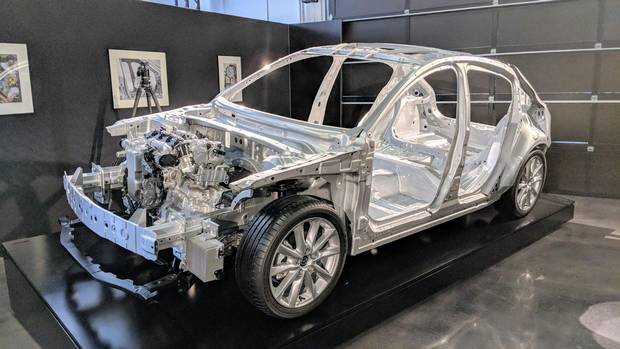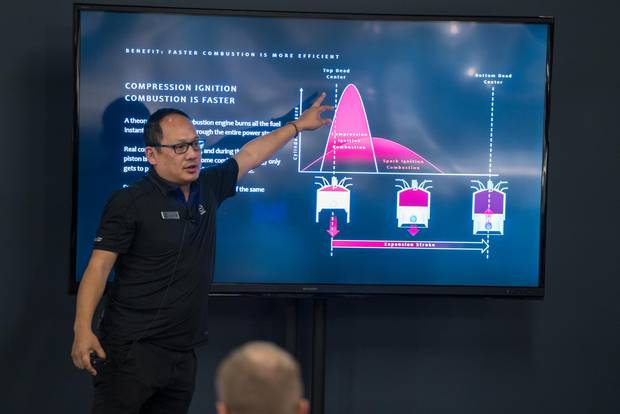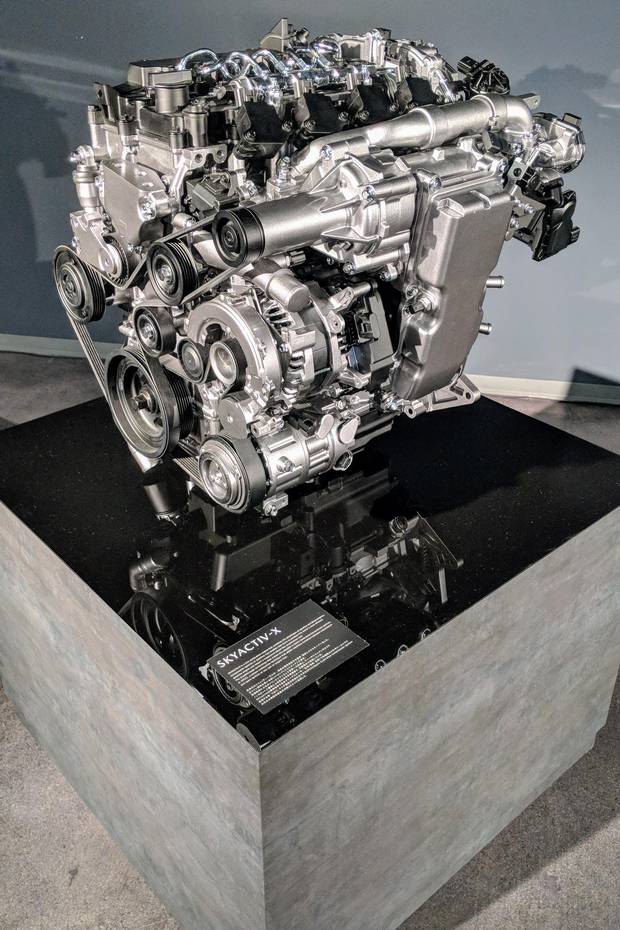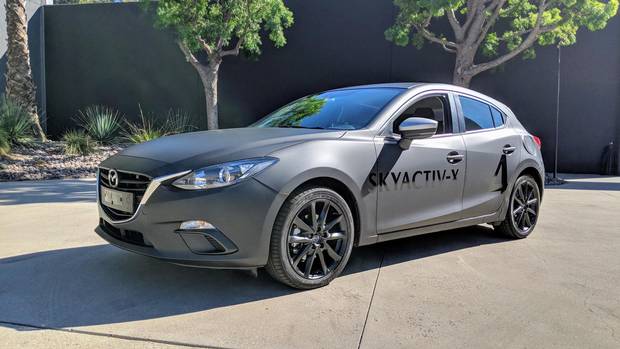Mazda's prototype Skyactiv-X car is different from the company's existing vehicles in two key ways, one of which is obvious and another that isn't.
The obvious part, which I came to appreciate over the course of a 30-minute test drive this week, is the redesigned seat that better supports your thighs, pelvis and ribcage. The other part is the engine that combines both compression and spark ignition, a development that Mazda believes will dramatically cut emissions and improve mileage in its vehicles.
The seat's rejigging, as well as its benefits, is the easier change for the average driver to understand. It's set more upright in the car, with a base that's more angled than the average seat. It's also mounted more stiffly to the body, which itself has been redesigned to support the engine to provide better shock absorption throughout.
The seat is thus intended to more closely mimic a person's walking posture, which Mazda engineers say is the only human form designed to naturally work with forward acceleration.
"Regular slouchy seats feel really comfortable right away," says Dave Coleman, manager of vehicle dynamics engineering at the company's research facility in Irvine, Calif. "This new seat concept really pays off at the end of a long drive."

The car is a Mazda 3 body essentially jury rigged onto the company’s new seventh-generation chassis.
PETER NOWAK/THE GLOBE AND MAIL
As a tall person with chronic back problems, I can attest to the problem of slouching in uncomfortable seats. The difference in the prototype car – a Mazda 3 body essentially jury rigged onto the company's new seventh-generation chassis – was noticeable after a few minutes. It's hard to decide definitively after such a short test drive, but I did come away liking it.
The engine's inner workings, on the other hand, are more aimed at hardcore gear heads and individuals with advanced knowledge of thermodynamics.
In a nutshell, the Skyactiv-X engine ignites a mixture of fuel and air by compressing it with the help of a spark. Mazda says this hybrid Spark Controlled Compression Ignition is the first of its kind and will help it lower carbon-dioxide emissions by a further 30 per cent from existing Skyactiv-G engines.
In addition, the Skyactiv-X burns fuel quicker, more completely and loses less heat, which gives cars a 30-per-cent gain in torque at low speeds.
"We're fundamentally changing how we burn gasoline," powertrain engineer Jay Chen says. "It's much more fun to drive. It's like driving your car in sport mode all the time, but without the higher gas bill."

Powertrain engineer Jay Chen.
David Dewhurst Photography/Mazda
In my test drive, I wouldn't have been able to detect when the car was switching between regular spark ignition and the compression method if it hadn't been for a dashboard-mounted tablet display telling me it was happening. The transitions were smooth and the performance was indistinguishable from a regular combustion engine.
Mazda's prototype car was guilty of some engine knock, a rattling noise that occurs when the mix of air and fuel in the cylinders isn't quite right. The company says it's still fine-tuning the process ahead of putting Skyactiv-X into production some time next year.
The new engine is integral to Mazda's future, representing its bridge to electrification. With no hybrids or electric vehicles in its lineup yet, the Hiroshima-based company is relatively behind competitors.

Mazda says the hybrid Spark Controlled Compression Ignition is the first of its kind.
PETER NOWAK/THE GLOBE AND MAIL
Mazda announced a partnership with Toyota in September to jointly develop EVs, but it won't start seeing results for a few years yet.
Until then, the company is betting on more efficient and less-polluting combustion engines, the whole point of what it calls its Sustainable Zoom Zoom 2030 strategy. Executives expect that the investments going into Skyactiv-X will translate into future benefits with electric cars.
"Our thinking is if this base engine technology can be improved, why not improve it?" says Robert Davis, senior vice-president of special assignments. "Everything should benefit from that base engine improvement."
Still, the company is under increasing pressure to ramp up electric plans as more jurisdictions move toward quotas.
Quebec, for example, introduced regulations last year that require 3.5 per cent of auto sales to be hybrid or electric starting with 2018 models, rising to 22 per cent by 2025. Companies that don't meet the threshold will have to buy credits from those that do.
The writer was a guest of the auto maker. Content was not subject to approval.
Shopping for a new car? Check out the new Globe Drive Build and Price Tool to see the latest discounts, rebates and rates on new cars, trucks and SUVs. Click here to get your price.
